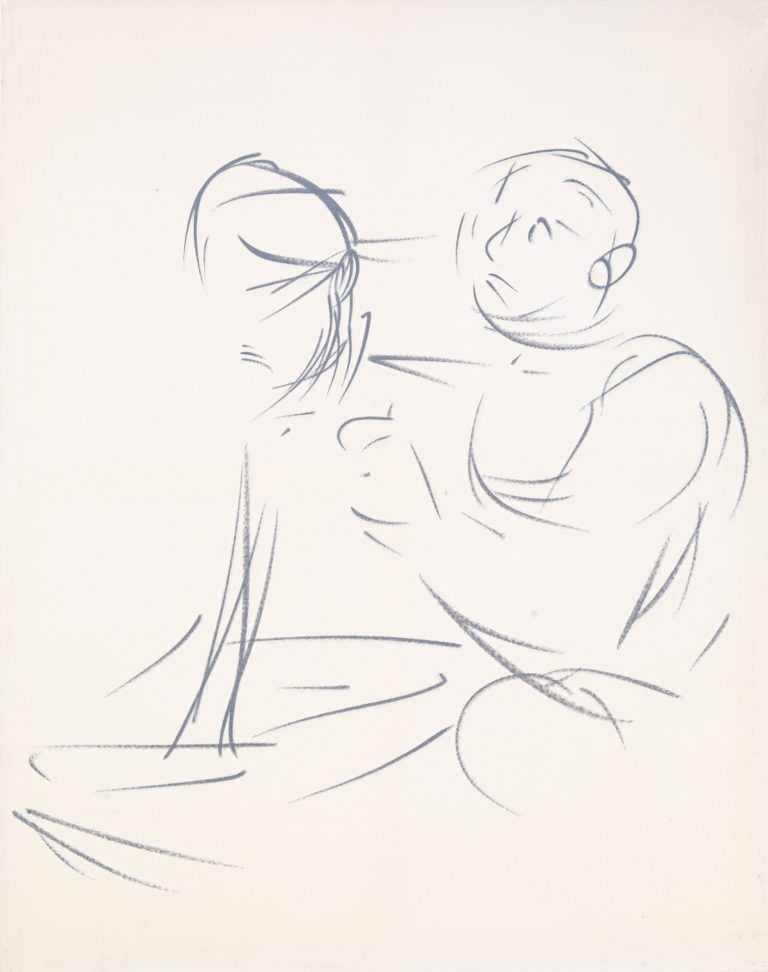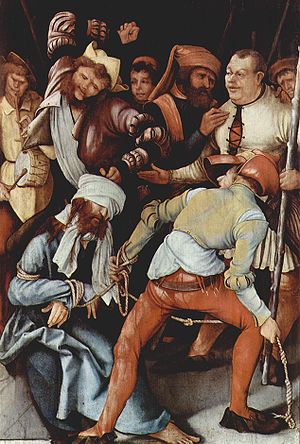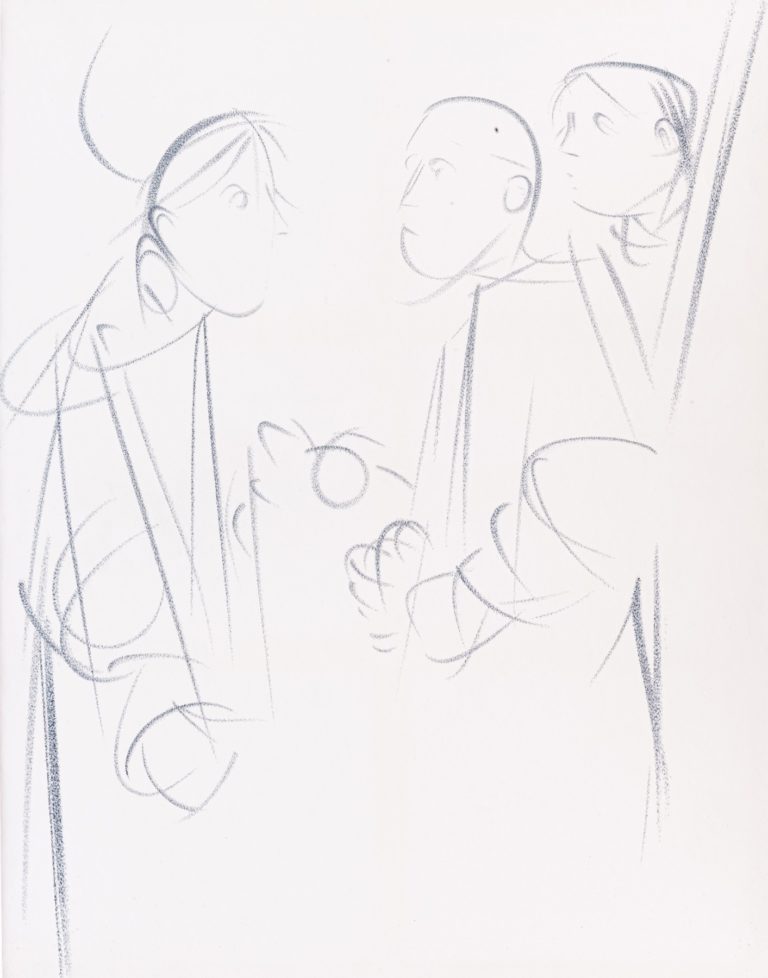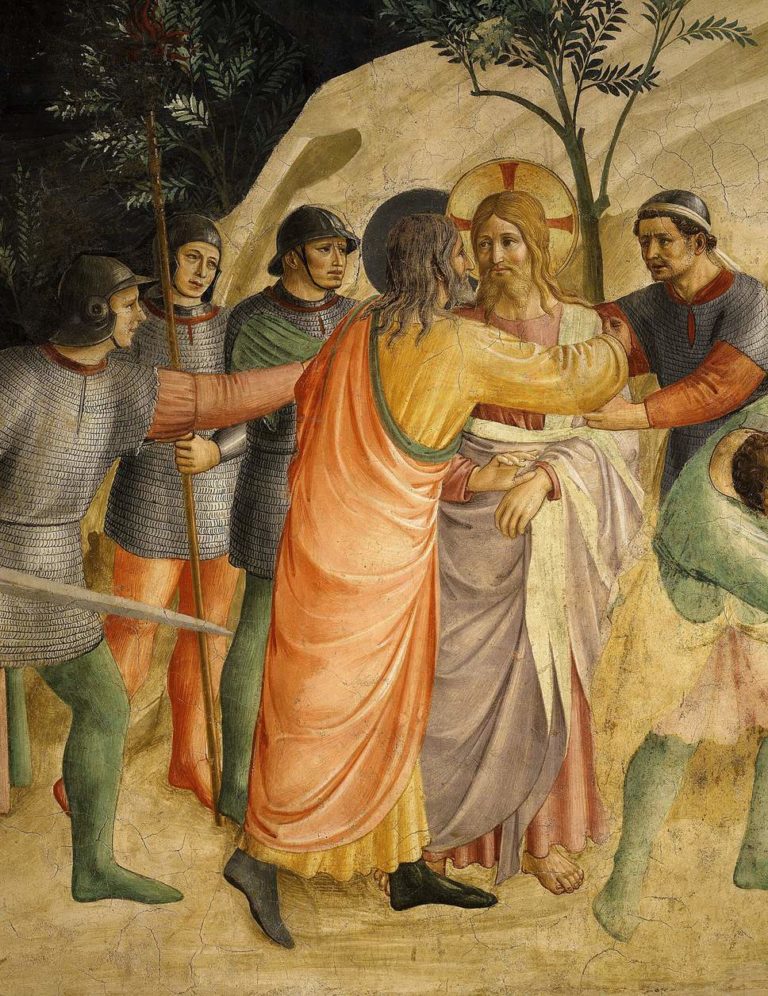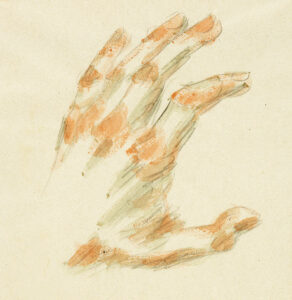The Marchutz Tapes — Reflections on Art
Art Teaches Transcendence
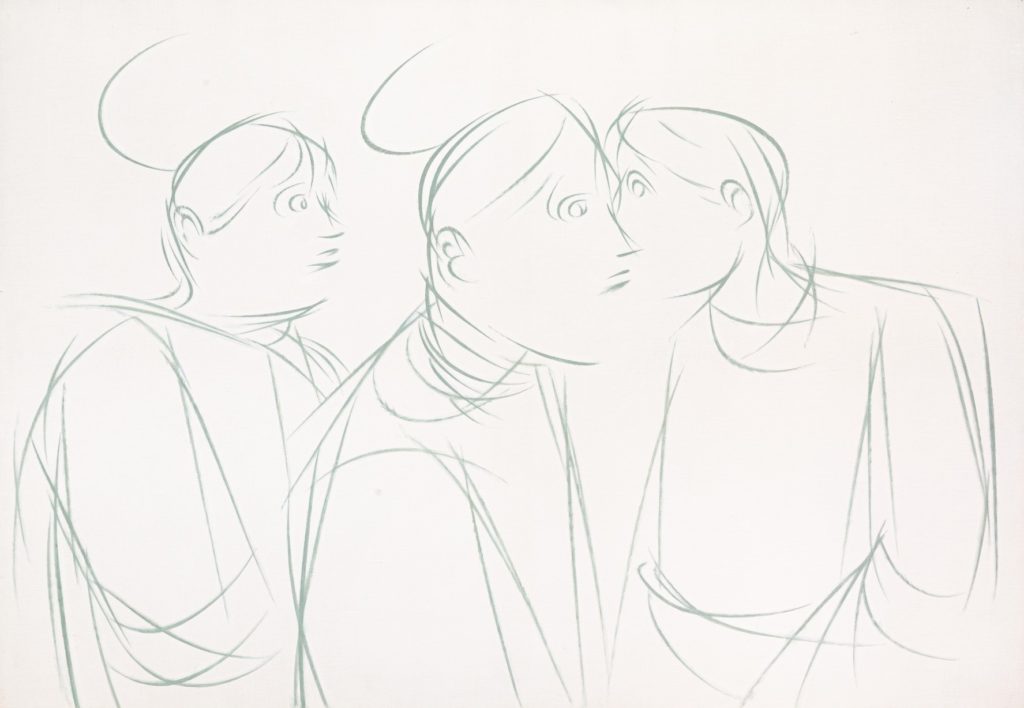
I have long been interested in the possible connections between Leo Marchutz’s experience during World War II and his choice to draw so much of his work from the Gospel of St. Luke. I was particularly struck by this exchange:
Leo Marchutz (LM): The war was a great, hard, and horrible time.
Billy Weyman (BW): Can you say what you think the overall effect of the war was on you in general, especially in relation to your work?
LM: . . . it was after the war, I started to make these (biblical) drawings. If that is a result of the war or not, I cannot tell you. It is probably connected, because the first paintings I made that were successful had come at the end of the First World War—it was in ‘17 or ’18. So there must be a connection.
BW: So really the two times in your life when you did religious works were right after both wars.
LM: Yeah, yeah. That is what I did. It’s obvious.
BW: Because everything else in between was landscape, or Symposium inspired works, or whatever.
LM: That is a fact. I think it was easier to simplify, to see it only a certain way …. the interest of these paintings is the relations between men, between people… the Gospels or the Bible is an “inepuisable” [inexhaustible] matter. Because it is already art! Nature is already simplified, it’s already appearing in a certain shape, in a certain form—human nature in this case.
And it makes it much easier to capture relations if they are already fixed in a certain form… If a few lines can say so much, well, it’s something which is certainly very near to art or is art already. And whatever you take in the Gospel, whatever its sense is, it is a kind of vision, a particular vision, which is very complete, very self-sufficient. And it is an image, even if the text is made with words. I think the visual part of it is the most important. It is transmitted by sayings, by words. You cannot say where it lies. If you think about the words of Mary, Martha – Mary complaining about her sister doing nothing. And the answer is, (I do not know the exact words), “You are a good woman and you take care of many things, but your sister has chosen the better path.” Well, that is something one cannot talk about but one can try to show it. It lends itself to an image. And even I should say the image has to express the totality of the going on. Any text you take.
L.M.: … it was a language, it was understood by people… And in the Middle Ages the paintings in the churches, they were understood immediately. They were a kind of speaking to the people who could not read, so they used images.
B.W.: I guess a language was on the whole used less abstractly in those times than it is today. If you take the images in Scriptures, for example, the whole of the Old and New Testament, it is really a very concrete language, always referring to the land or to the animals.
L.M.: Well, anyhow, always to the things people were concerned with. That is the first condition. Otherwise, art cannot be a common language, if people do not understand . . .
BW: It’s a very concrete thing.
LM: It is an absolutely concrete thing yet at the same time the most abstract thing.
BW: The world of the Gospels is a world that one can feel and touch and see and know through the senses…
LM: Even many ways of doing it, I think, of rendering it. I should say these things have been rendered in many ways. But they have never been rendered in their simplicity….But the “propre” [i.e. unique characteristic] of the Gospels is really that they are the most common sayings. The vision is so complete.
Leo Marchutz,
Excerpt from The Marchutz Tapes, 1974-1976
A number of Leo Marchutz’s works portray biblical passages (such as “Christ Bearing the Cross” and “Crucify Him, Crucify Him”) that speak of the pain of rejection, injustices among men, and imminent death. Again and again he returned to the subject of the “Kiss of Judas” or “Approach of Judas.” Though Marchutz never mentions the subject in these transcriptions, I believe his interest in it is directly related to his wartime experience of being taken from his home at Chateaunoir and interned at the Camp des Milles. During this time and the years after, when he was forced to live in hiding from the Nazis, Leo Marchutz certainly experienced rejection, hopelessness, injustice, and even the possibility of death.
I wonder if the poignant, powerful, even transcendent quality of these works could have been attained had Leo Marchutz never suffered in this way. To create works that reveal a new way to understand the experience of Christ after centuries of artists making images of the same subjects, to me this indicates an inner vision so unique that one could only find it through living it. Marchutz “renders what he has seen” and personally experienced, investing in these images a truth that is available to be received by the viewer. Leo Marchutz says, “It is art, which teaches us about transcendence.”
>> Child of a Surviror and Survivor (click to read more on Leo Marchutz during the war)

Excerpt chosen by
Jill Steenhuis
Jill Steenhuis attended The Leo Marchutz School of Painting and Drawing in 1980-81. Since 2006, Jill has been doing lithography using Leo Marchutz’ stones and presses. Jill is a full-time painter in Provence.
Click here to view Jill’s work.

